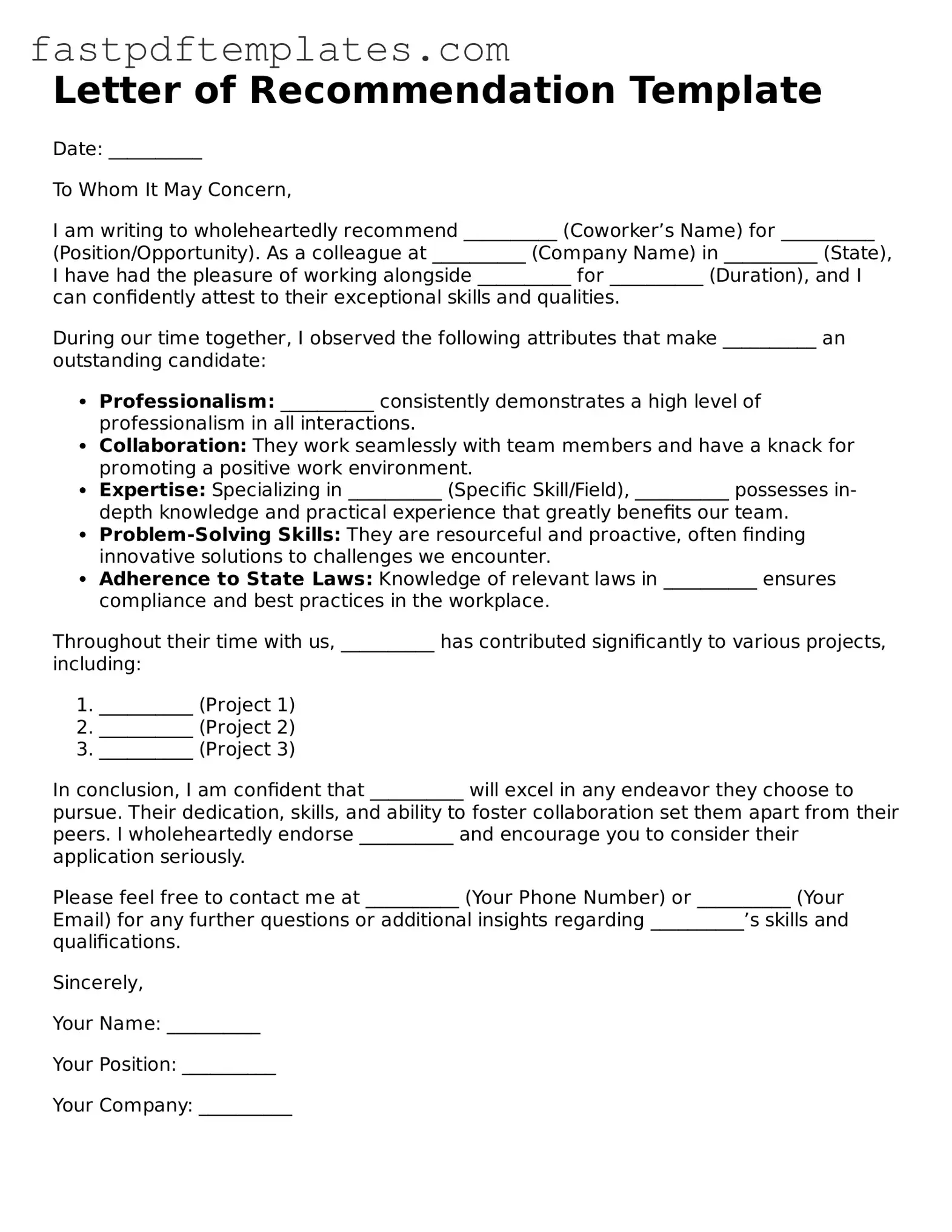Letter of Recommendation Template
Date: __________
To Whom It May Concern,
I am writing to wholeheartedly recommend __________ (Coworker’s Name) for __________ (Position/Opportunity). As a colleague at __________ (Company Name) in __________ (State), I have had the pleasure of working alongside __________ for __________ (Duration), and I can confidently attest to their exceptional skills and qualities.
During our time together, I observed the following attributes that make __________ an outstanding candidate:
- Professionalism: __________ consistently demonstrates a high level of professionalism in all interactions.
- Collaboration: They work seamlessly with team members and have a knack for promoting a positive work environment.
- Expertise: Specializing in __________ (Specific Skill/Field), __________ possesses in-depth knowledge and practical experience that greatly benefits our team.
- Problem-Solving Skills: They are resourceful and proactive, often finding innovative solutions to challenges we encounter.
- Adherence to State Laws: Knowledge of relevant laws in __________ ensures compliance and best practices in the workplace.
Throughout their time with us, __________ has contributed significantly to various projects, including:
- __________ (Project 1)
- __________ (Project 2)
- __________ (Project 3)
In conclusion, I am confident that __________ will excel in any endeavor they choose to pursue. Their dedication, skills, and ability to foster collaboration set them apart from their peers. I wholeheartedly endorse __________ and encourage you to consider their application seriously.
Please feel free to contact me at __________ (Your Phone Number) or __________ (Your Email) for any further questions or additional insights regarding __________’s skills and qualifications.
Sincerely,
Your Name: __________
Your Position: __________
Your Company: __________
